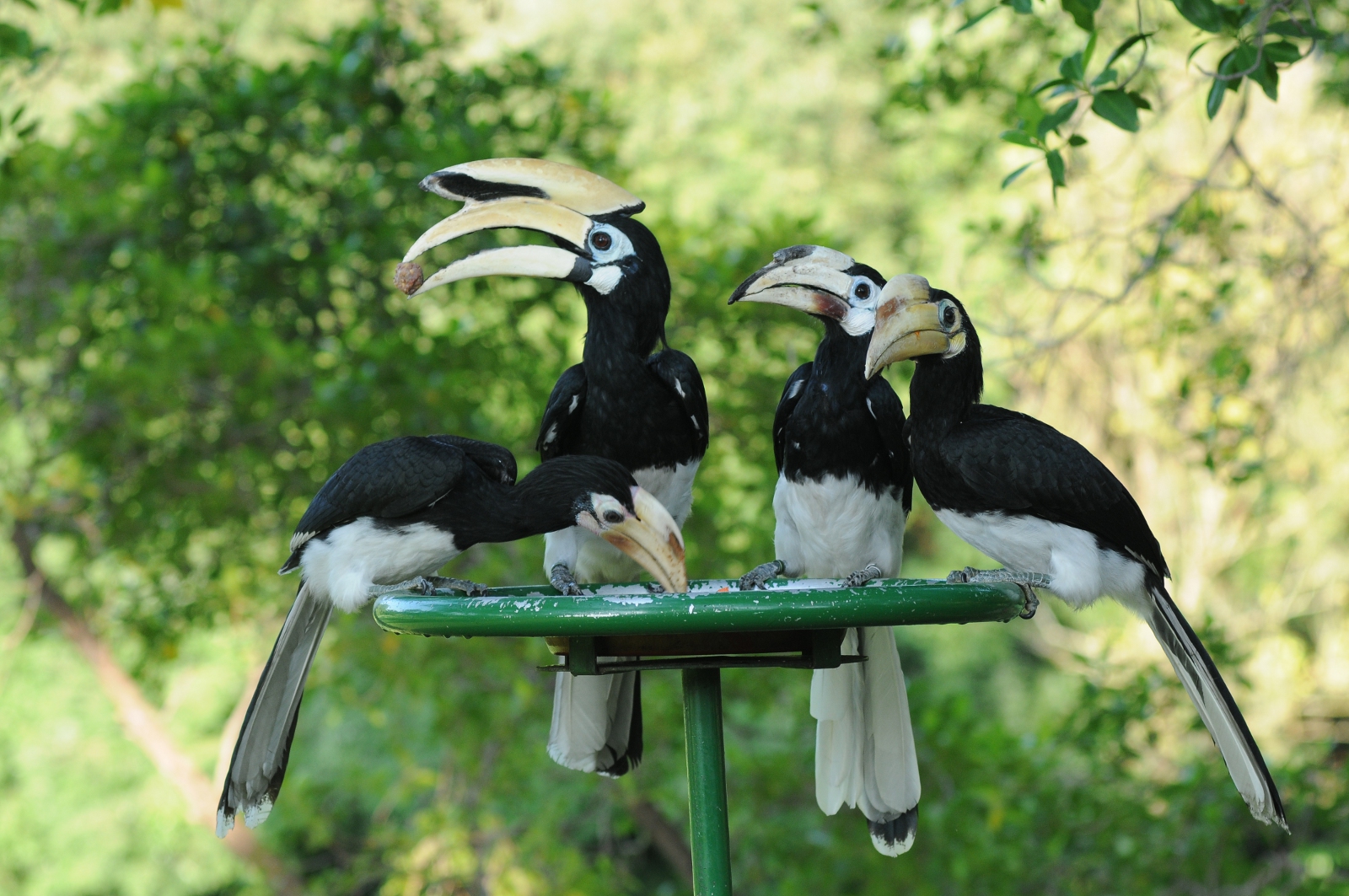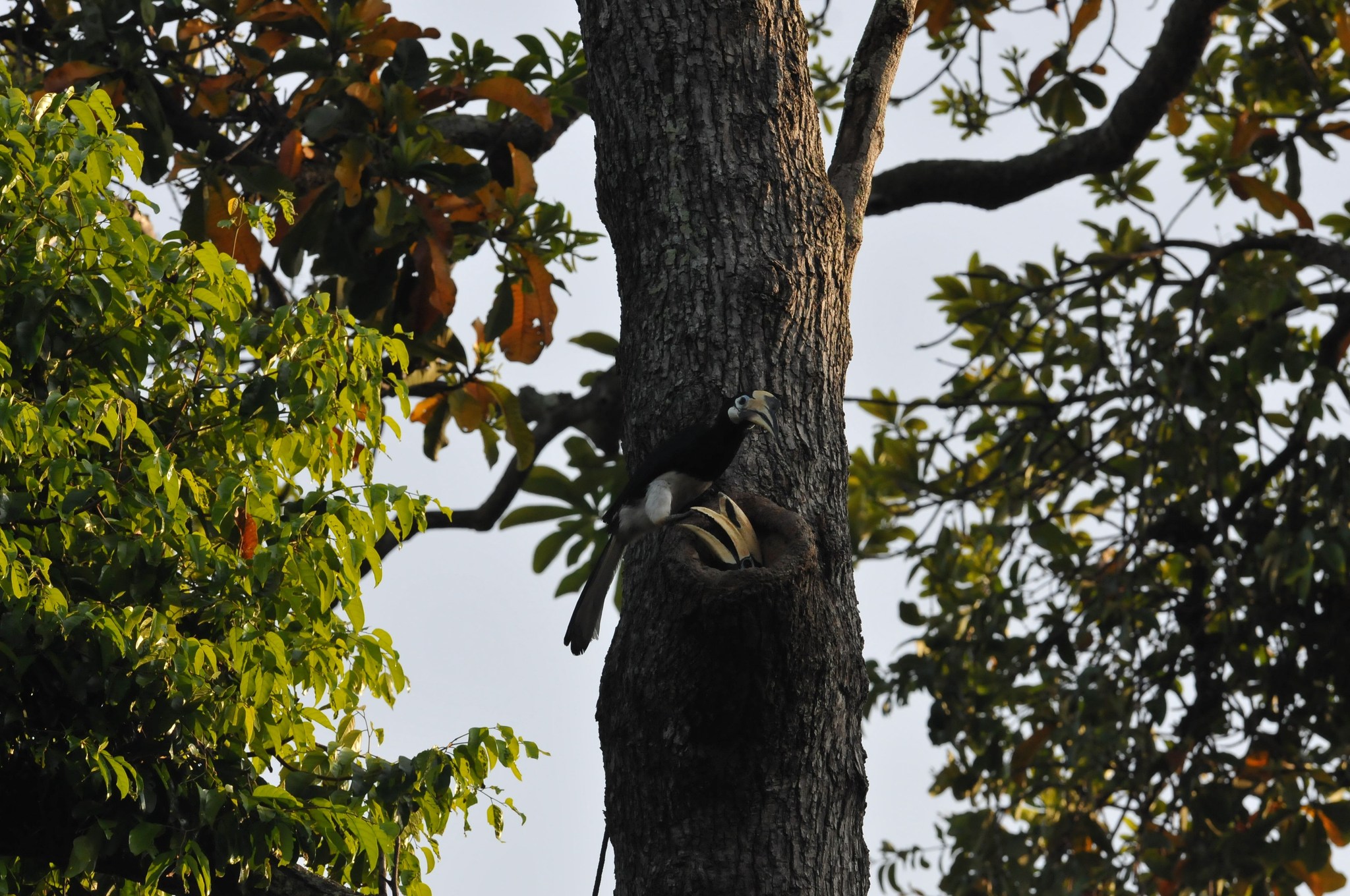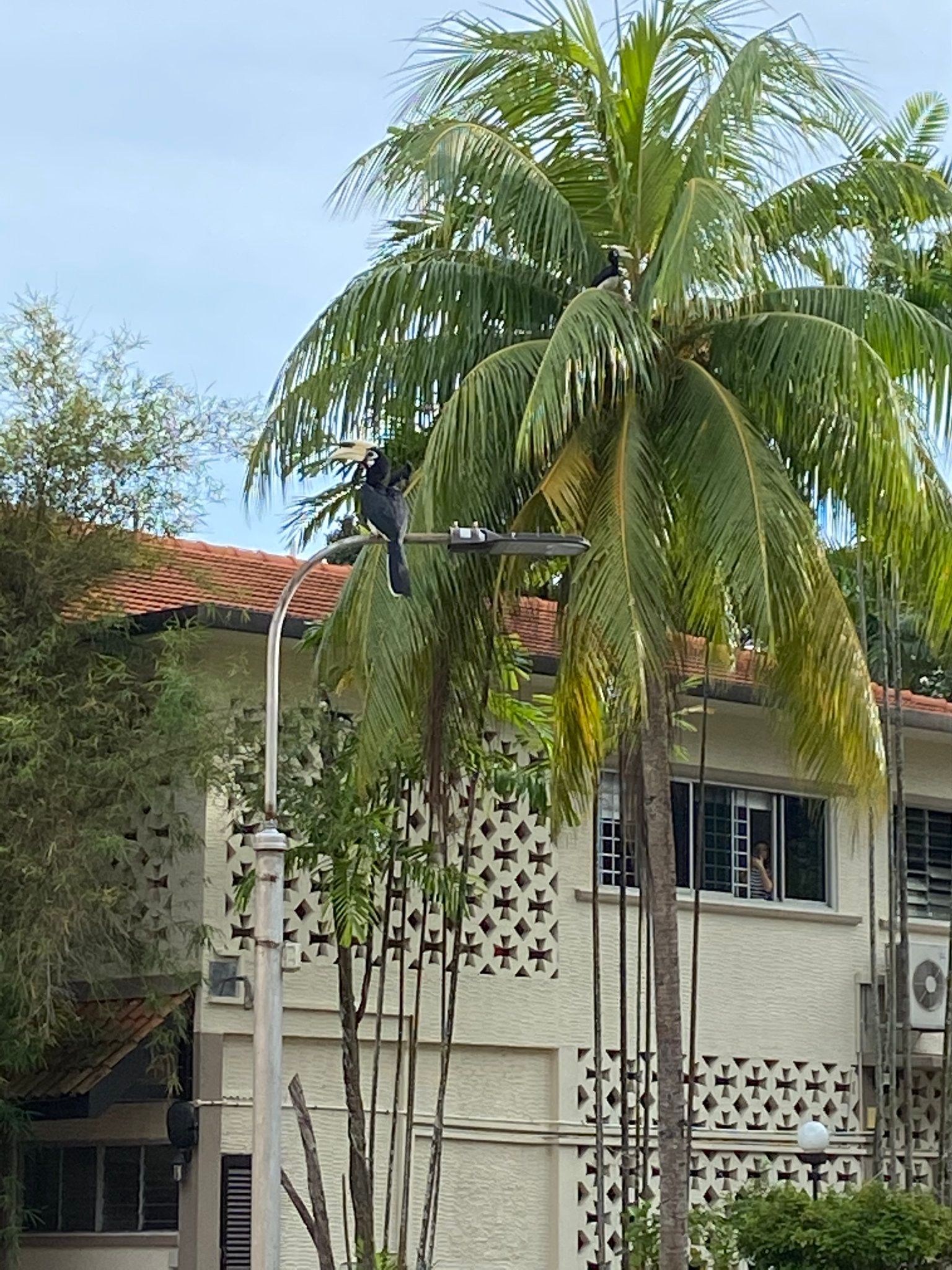Hornbills in Singapore




📷 1: A picture taken of a hornbill taken by Rudolf Jagerspacher, an Austrian photographer who came to Singapore in 1886. [NLB]
📷 2: A gathering of the Oriental Pied Hornbill in Mount Emily. [NParks]
📷 3: Two hornbills spotted in a tree in Changi Village, which contains a nest. [NParks]
📷 4: A hornbill spotted in a Kindergarten in Newton.
#TIL Hornbills were once thought to be locally extinct after being extensively hunted for their casques, and it was not until the 2000s did the local hornbill population pick up again thanks to extensive conservation efforts.
According to 14th century Chinese trader Wang Dayuan, “top-quality” hornbill casques (hollow, bony growths on the upper part of the bill) were one of the products traded at the port of Temasek. Highly sought after by the Chinese elite, the casques were being acquired as substitutes for ivory. The trade of hornbill casques continued even after the British colonised Singapore in the 19th century.
The Oriental Pied Hornbill is the dominant hornbill species living in Singapore today. Numbering in the low hundreds, they are easily recognisable by their prominent yellow bills, white facial markings, and large size. Another defining feature of the hornbill is its casque, which acts as sound chambers to amplify its calls and vocalisations. As omnivores, they eat a range of foods including fruits, nuts, insects, and even small animals, birds, and mammals.
Successful conservation efforts in the 2000s by the National Parks Board (NParks), Jurong BirdPark, and researchers have pulled the local hornbill population back from the brink of extinction after extensive hunting prior to the mid-20th century. Conservation efforts included close monitoring of hornbill movement, breeding behaviour, and food requirements. Conservationists also installed artificial nest boxes in Pulau Ubin and the Istana to encourage hornbill breeding and survival.
However, while local hornbills are no longer hunted for their valuable casques, their survival remain threatened by environmental damage caused due to human activity. There have been recorded cases where hornbills were entangled with discarded fishing lines, leading to their injury and death. Deforestation is also a threat to our hornbills, as lush forests crucial for breeding and survival are cleared for urban development.
As Singapore continues to progress and develop, it is paramount that we maintain a harmonious relationship with our natural environment – that, even as we urbanise, Singapore will still remain a ‘City in Nature’ that is liveable and sustainable for humans and wildlife alike.

